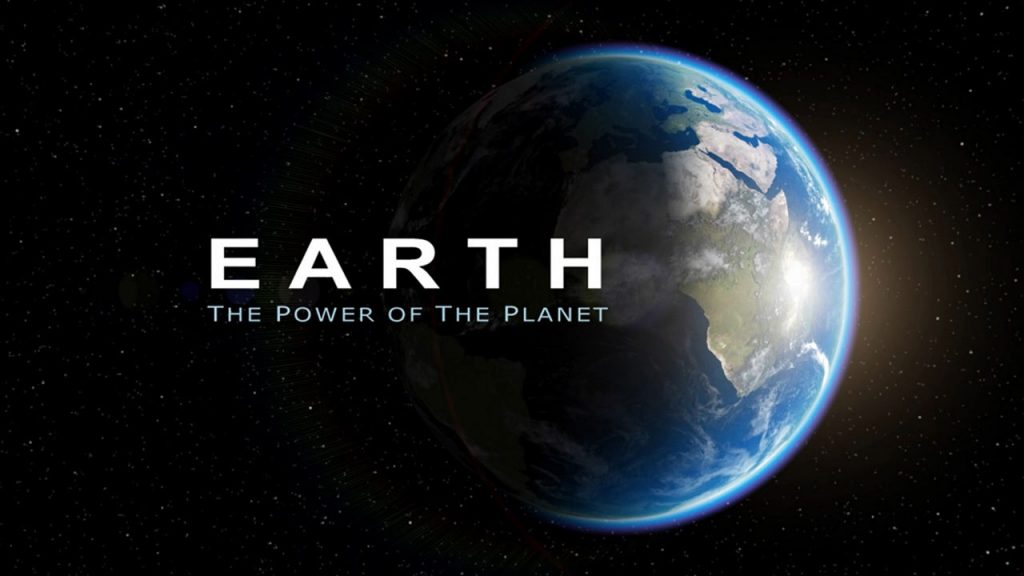Earth: The Power of the Planet episode 5 – Rare Earth: Life on Earth prospers because it enjoys the right amount of heat from the sun, and the atmosphere prevents meteorite bombardment. Geography series with Dr Iain Stewart.
Our planet is unique within the solar system. Four-and-a-half billion years ago it had a twin named Theia which was absorbed into the Earth, increasing its gravity and allowing it to form an atmosphere. Iain travels to Meteor Crater in Arizona to explore the atmosphere’s role in protecting us from bombardment by meteorites. Life on earth only prospers because it is provided with right amount of heat from the sun.
Earth: The Power of the Planet episode 5 – Rare Earth
Theia
Theia is a hypothesized ancient planet in the early Solar System that, according to the giant-impact hypothesis, collided with the early Earth around 4.5 billion years ago, with some of the resulting ejected debris gathering to form the Moon. In addition to explaining Earth’s large satellite, the Theia hypothesis can also explain why Earth’s core is larger than would be expected for a body its size; Theia’s core and mantle mixed with Earth’s core and mantle.
According to one version of the hypothesis, Theia was an Earth trojan about the size of Mars, with a diameter of about 6,102 km (3,792 miles). Additional evidence published in 2019 suggests that Theia might have formed in the outer Solar System rather than the inner Solar System, and that much of Earth’s water originated on Theia.
According to the giant-impact hypothesis, Theia orbited the Sun, nearly along the orbit of the proto-Earth, by staying close to one or the other of the Sun–Earth system’s two more stable Lagrangian points (i.e., either L4 or L5). Theia was eventually perturbed away from that relationship by the gravitational influence of Jupiter and/or Venus, resulting in a collision between Theia and Earth. Computer simulations suggest that Theia was traveling no faster than 4 km/s (8,900 mph) when it struck Earth at an estimated 45-degree angle.
Originally, the hypothesis supposed that Theia had struck Earth with a glancing blow and ejected many pieces of both the proto-Earth and Theia, those pieces either forming one body that became the Moon or forming two moons that eventually merged to form the Moon. Such accounts assumed that if Theia had struck the proto-Earth head-on both planets would have been destroyed, creating a short-lived second asteroid belt between the orbits of Venus and Mars.
In contrast, evidence published in January 2016 suggests that the impact was indeed a head-on collision and that Theia’s remains can be found in both the Earth and the Moon.
Meteor Crater
Meteor Crater, or Barringer Crater, is a meteorite impact crater about 37 mi (60 km) east of Flagstaff and 18 mi (29 km) west of Winslow in the desert of northern Arizona, United States. The site had several earlier names, and fragments of the meteorite are officially called the Canyon Diablo Meteorite, after the adjacent Cañon Diablo. Because the United States Board on Geographic Names recognizes names of natural features derived from the nearest post office, the feature acquired the name of “Meteor Crater” from the nearby post office named Meteor.
Meteor Crater lies at an elevation of 5,640 ft (1,719 m) above sea level. It is about 3,900 ft (1,200 m) in diameter, some 560 ft (170 m) deep, and is surrounded by a rim that rises 148 ft (45 m) above the surrounding plains. The center of the crater is filled with 690–790 ft (210–240 m) of rubble lying above crater bedrock. One of the interesting features of the crater is its squared-off outline, believed to be caused by existing regional jointing (cracks) in the strata at the impact site.
Despite historic attempts to make the crater a public landmark, the crater remains privately owned by the Barringer family to the present day through their Barringer Crater Company, which proclaims it to be the “best-preserved meteorite crater on Earth”. Since the crater is privately owned, it is not protected as a national monument, a status that would require federal ownership. It was designated a National Natural Landmark in November 1967.




